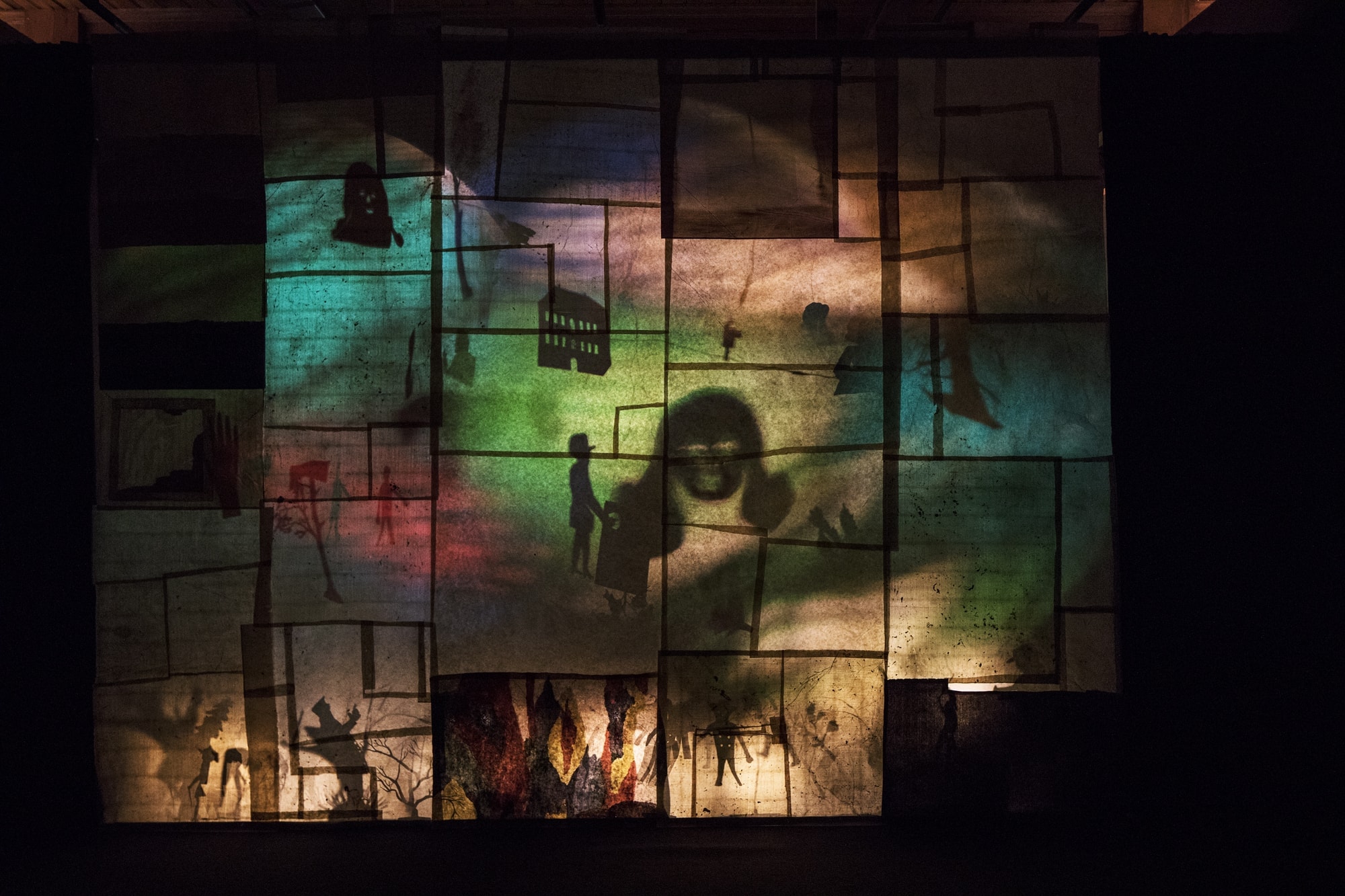
It’s naive to think Jockum Nordström’s work is naive, but that’s your first thought. The elements in his collages of watercolour cats and people with back-arrow-key noses must surely have been cut out with safety scissors and mounted with Pritt Stick, for display in a classroom window.
Remember when adults were looming figures who had conversations over our heads? At the same time, weren’t they also miniature figurines who we danced around with our hands? Such is Nordström’s fiat. His characters are clearly recognisable, but they stand in ambiguous relation to one another — then again, why shouldn’t they?
Remember when adults were looming figures who had conversations over our heads?
For an exhibition titled ‘The Anchor Hits the Sand’, Nordström’s work seems to have slipped the usual moorings, and is hovering on an imaginative plane reminiscent of that one time your T-Rex took tea with your teddy.
Somewhere between said tea party, a comic book with no panels and the public square of a genre painting — a representation of ordinary people engaged in common activities — Nordström’s collages throw characters onto crinkled paper, while we provide the narrative. So to a network of possible events: in the bottom-left corner of ’Farewell’ (2019), a man bends to receive a back-scratch from a cat with a horse-like kink to its leg.
Nordström’s collages throw characters onto crinkled paper, while we provide the narrative
Next to the pair, a naked woman in lotus pose appears to shush them. Scale, proportion, perspective aren’t part of the palette, and she could of course be shushing someone off-stage. Humour comes from connecting the snapshots and from the realisation you’ve connected them at all.
Nordström’s work might be childlike, but it’s not child-friendly. Above our trio of cat, backscratchee, and meditator, some semi-nude, semi-spanking stuff is going on. A man wearing a choker is whipping a woman who is on all fours in a way that isn’t anatomically correct for any mammal, let alone a human. A cowboy in yellow shirt and snappy white Stetson swaggers by. Incongruous? Yes. Funny? I think so.
A man wearing a choker is whipping a woman who is on all fours in a way that isn’t anatomically correct for any mammal, let alone a human
Here are faces, poses, gestures scattered, as if in a game of marbles. Characters out of time and out of place fall where they may. Stripped of their context — and with fanciful contexts supplied, see the man in the 19th century top hat — we’re left to consider how we’re constantly building and rebuilding our own. We bumble through scene after scene, with all our private thoughts and daydreams.
Upstairs, collage meets shadow theatre, in the titular piece ‘The Anchor Hits the Sand’ (2019). The usual cast of sympathetic characters pass over the usual paper, though this time as silhouettes. They float in and out of the scene to the crackle of nostalgia in an accompanying soundscape (I make out Eartha Kitt’s ‘C’est Si Bon’ threaded through a swoon of muted trombones.)
We bumble through scene after scene, with all our private thoughts and daydreams
The title ‘The Anchor Hits the Sand’ suggests an arrival, docking at some distant port; it’s a destination too whimsical to be death, as an ant flies in as a shadow clinging to a twig. The shifting scene is less like an arrival, than a drifting departure. Or a return to an earlier stage in life. I’m put in mind of dementia — slippages in time and language — or at least regression to some forgotten ballroom, in which context is a thing that flickers around you.
The three of spades, the two of hearts suggest the play of chance — the playfully specific — while a crab might stand for crabwise thinking. But the piece, in its flightiness, resists interpretation. Behind the scenes all is crude animatronics — metal wires, electric motors, cut outs — collapsing the house of cards into something as simple as a mobile revolving above a crib.
Behind the scenes all is crude animatronics — metal wires, electric motors, cut outs
Aware that Nordström and I have been led down the garden path, I wonder if living as one in a stable present is a funny old fiction. Dreams, fantasy, and back-scratching cats are not incompatible with daily reality, but an integral part of it. Nordström’s work reminds us we’ve been living with easy understanding of this psychological pluralism since we were very small. But it’s easy to forget. There are always others unfolding beyond the frame. Being anchored in the now means living with the ambiguities.


